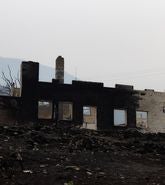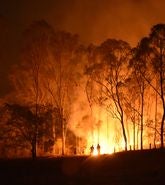The hallmarks of climate change – such as prolonged drought, record high temperatures, or even increased rainfall – have helped accelerate wildfire risk in California and other western states in North America.
Each wildfire season now tracks well above average. According to CAL FIRE, the 2021 California wildfire season was 58 percent above the five-year average in terms of acres burned; the 2020 season was more than two and a half times higher than the five-year average. Eight out of ten of the largest fires in California were in the last five years.
Homeowners, insurers, regulators, and a range of stakeholders including firefighters, builders, and landowners are caught in the middle of a growing issue as the true extent of wildfire risk – exacerbated by climate change – becomes more evident. All parties want to see action as pressures build.
Insurers, for example, struggle to accurately underwrite risk given the increased frequency and severity of wildfires. California’s state-mandated insurance, the Fair Access to Insurance Requirements (FAIR) plan, has examples of premiums in high-risk areas increasing fourfold.
The underlying climatic conditions intensifying wildfire risk will all continue to grow, so attention must shift to helping protect homes and businesses to be more resilient. But there is a debate as to which resilience measures work, and which represent sound investments.
History of Fire Suppression
For over a century, forest management policies in the western U.S. have focused on fire suppression, fighting fires to extinguish them as quickly and effectively as possible, rather than a treatment and prevention approach to reduce the fuel base. As a result, forests are dense. A study by the University of California, Davis, and the U.S. Department of Agriculture (USDA) states that California forests have 165–170 trees per acre, three times the density of 150 years ago.
Compounding the problem is exurban growth of the wildland-urban interface (WUI) where homes sit amid burnable vegetation. Approximately 50 million homes across the United States are currently in the WUI, increasing by one million homes every three years.
To explore the potential benefits of forest treatment – tackling the density of forests by essentially removing vegetation through clearing or controlled burning – the American Forest Foundation (AFF) partnered with RMS®. The AFF wanted to develop a replicable approach based on forest treatment to quantify avoided losses from wildfire to residential, commercial, and industrial infrastructure.
The AFF is a national conservation organization that works to empower family forest owners to make a meaningful conservation impact on their land. This analysis is timely as the recently passed Infrastructure Act allocates US$1.7 billion towards fuel mitigation. But would this represent a wise investment?
Focus on Grass Valley
For the AFF and RMS study, a wildfire analysis was conducted for the California city of Grass Valley, in Nevada County, located in the Sierra Nevada mountains. Grass Valley was chosen for its level of population at risk (76,000), the high overall financial risk to property as defined by average annual loss (AAL), and high community vulnerability as defined by loss cost.
Both parties wanted to test the following hypothesis: Does treating (through clearing or controlled burning) just a percentage of the available fuels (less than 20 percent) in a landscape result in significant reductions in potential loss to communities, as measured by avoided loss to hard infrastructure and downtime of critical infrastructure? And what approach, in terms of types of vegetation or proximity to built infrastructure, would work best? Download the full AFF report.
Wildfire Risk Modeling
This type of analysis is now made possible using sophisticated probabilistic wildfire risk modeling that considers the widest range of factors – including climate, fire triggers, vegetation type, gradient, and how they all contribute to fire spread. The RMS® U.S. Wildfire HD Model simulates millions of plausible fire events, understanding the built environment to establish wildfire risk and financial loss down to the location level.
Understanding all factors and the risk at this level means that the model can incorporate mitigation factors – such as changing roof materials, clearing home perimeters, and reducing vegetation – to establish how mitigation impacts losses. This can help stakeholders to explore which mitigation investments deliver results.
For the analysis, modifications to the RMS U.S. Wildfire HD Model stochastic framework were made to account for changes in the fuel landscape, centered around four aspects to accommodate fuel treatment. These included accounting for the treatment of vegetation in proximity to properties, reflecting ember intensity reduction, changes to fire size distribution, and reductions in urban conflagration.
Through the application of various types of forest treatment measures, avoided AAL reached up to 59 percent with payback periods as short as two to three years. Recognizing that landscape level fuel treatments require significant investments to operationalize, to best capture potential return on this investment from the lens of avoided losses to hard infrastructure (AAL), an indicative net present value (NPV) analysis was completed. This revealed two positive NPV treatment pathways. Please explore the report for full results.
This study found that results are strongly influenced by the spatial distribution of fuels relative to the at-risk properties. Communities like Grass Valley, which have a high concentration of treatable forest fuels close to infrastructure, would see measurable and noteworthy reductions in the probability of moderately sized and larger, more extreme events. But this will not be the case everywhere.
This is the first time that a financial estimate of avoided loss from specific forest treatment regimes has been generated. The approach establishes a methodology to weigh the costs and benefits, effectively the return on investment (ROI), in increasing forests’ natural fire resiliency and the contribution to safeguarding critical community infrastructure. That ROI – with payback in some scenarios of two to three years – could be a critical determinate for scaling the investment in fuel reduction necessary to address the fire crisis burning across the West today.
This analysis for forest treatment provides a strong base to further advance the methodology – to simulate more realistic treatment applications, widen the definition of built infrastructure to include vital services such as water supplies, and start to look at potential risk transfer tools.
By using advanced wildfire risk modeling, many different mitigation measures can be assessed to understand their effectiveness, payback return, and impact on specific communities, which can all contribute to hardening wildfire-prone communities to whatever the future holds.
Download the AFF report, and learn more about the RMS® U.S. Wildfire HD Model.








